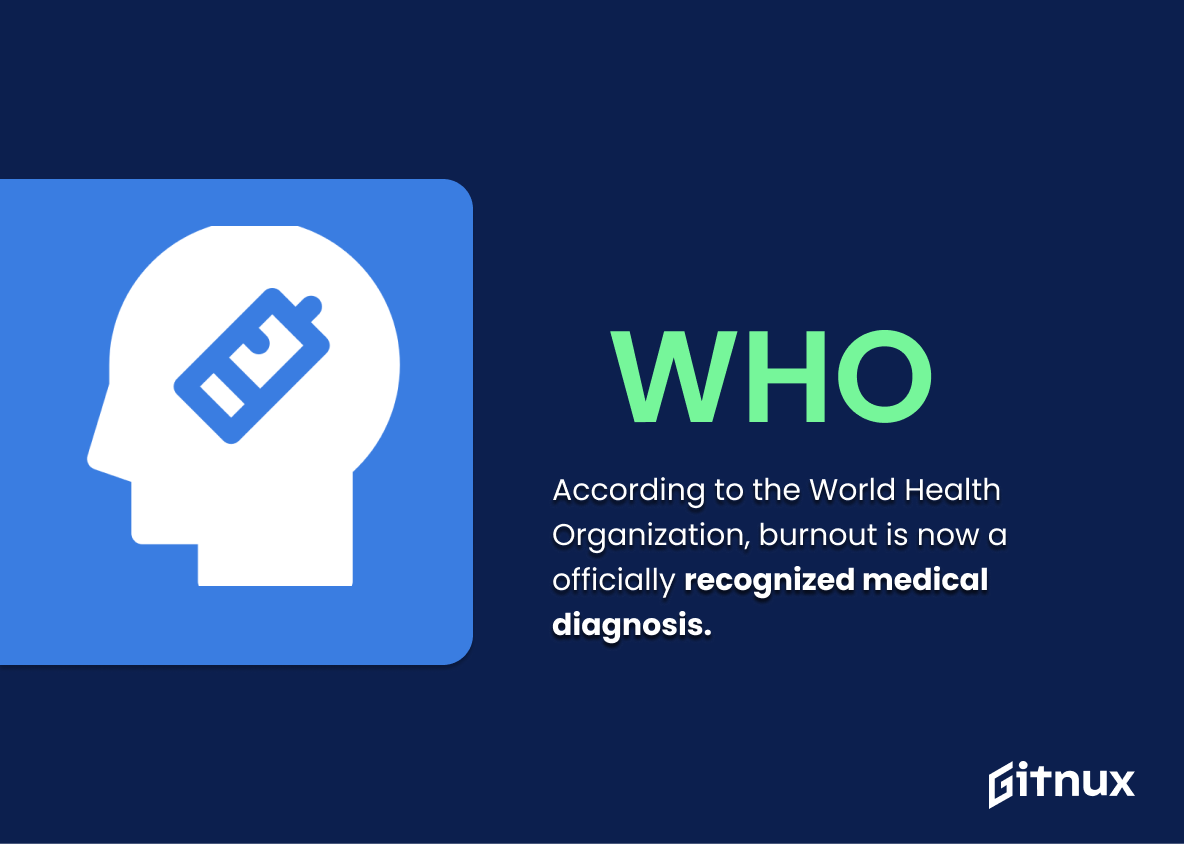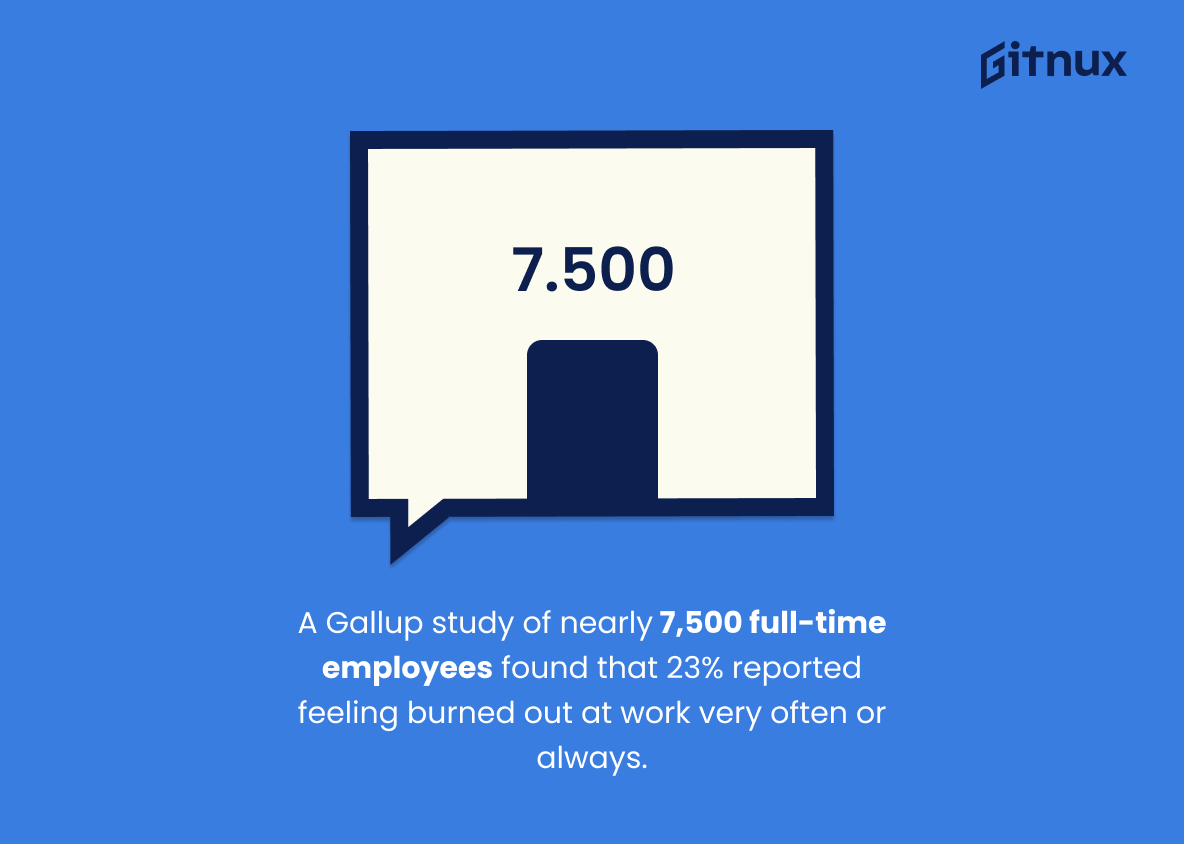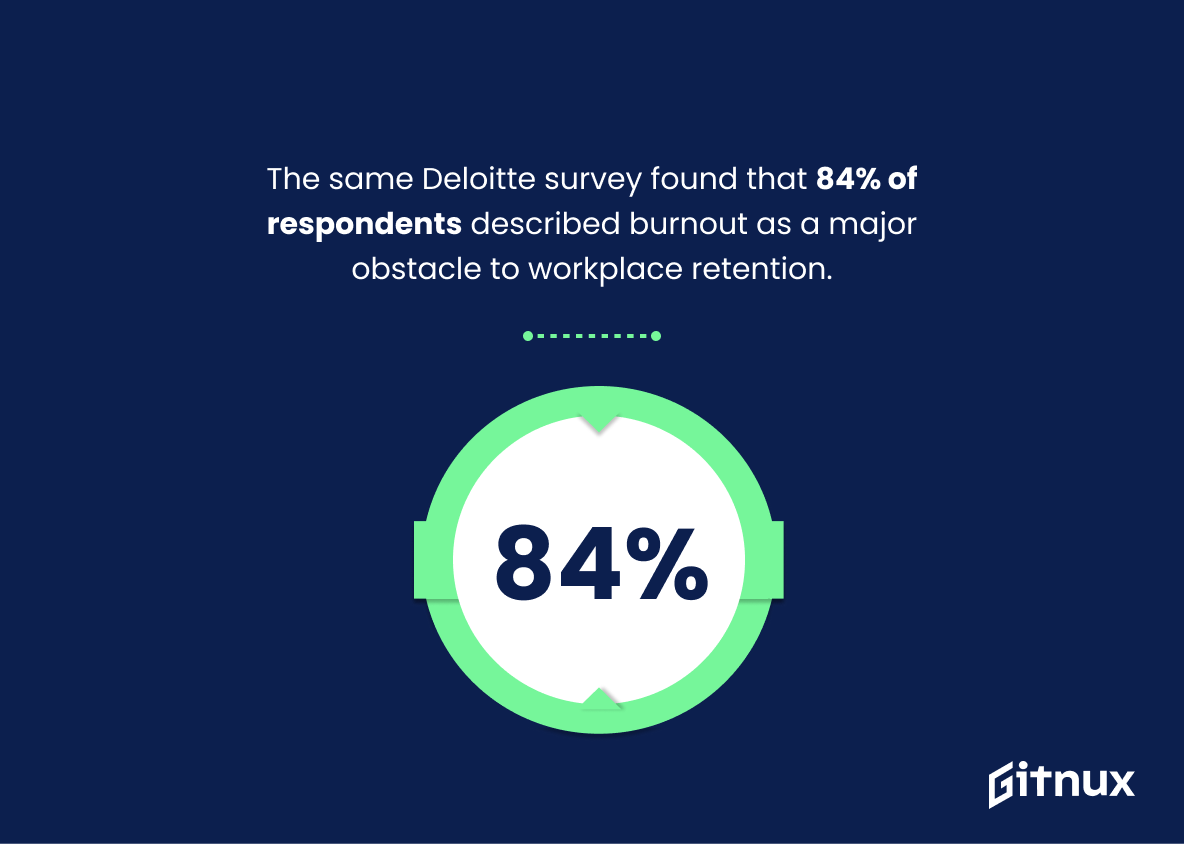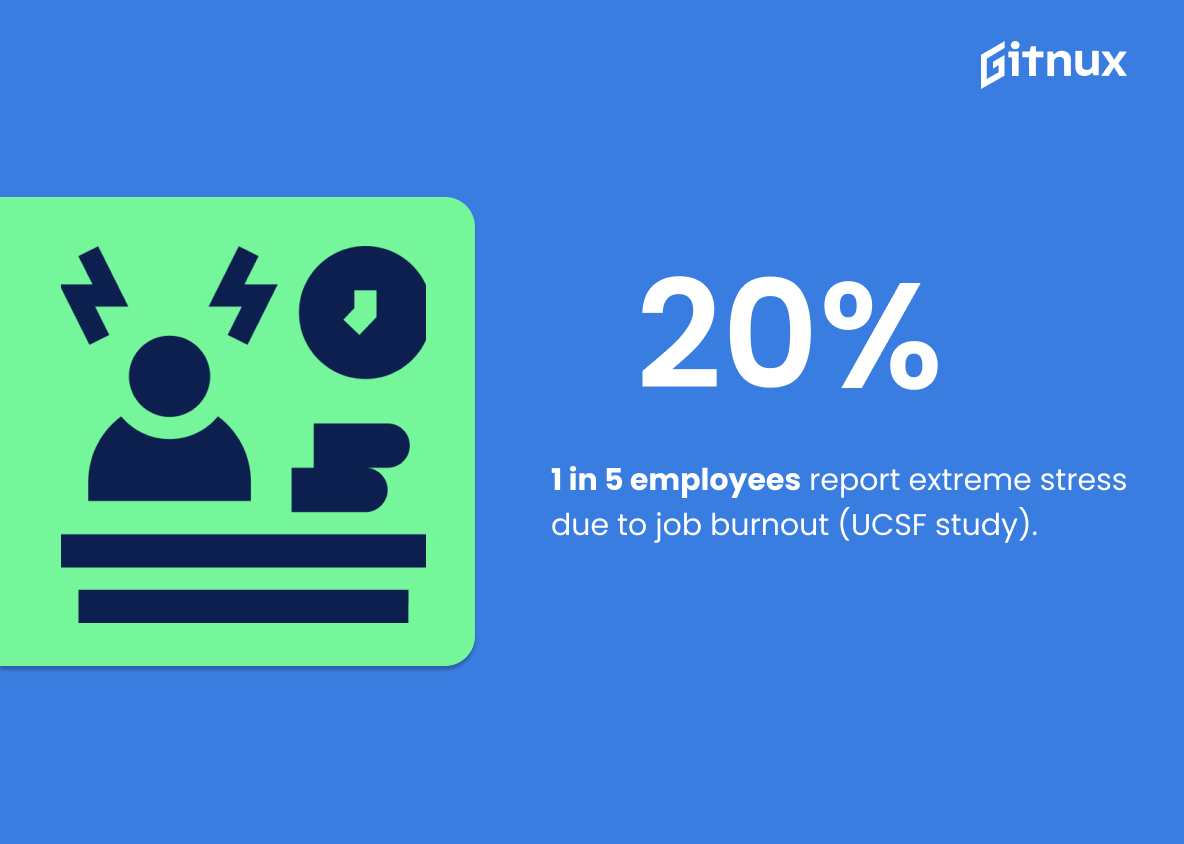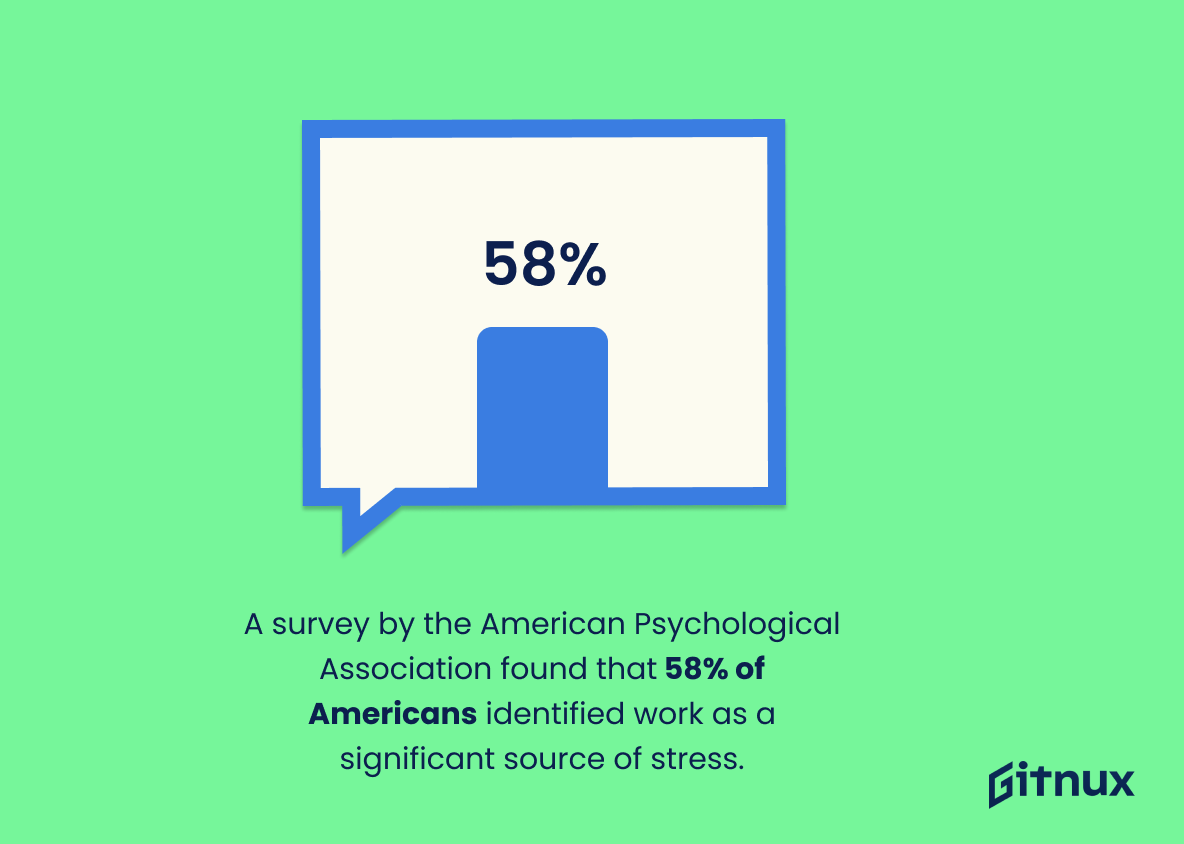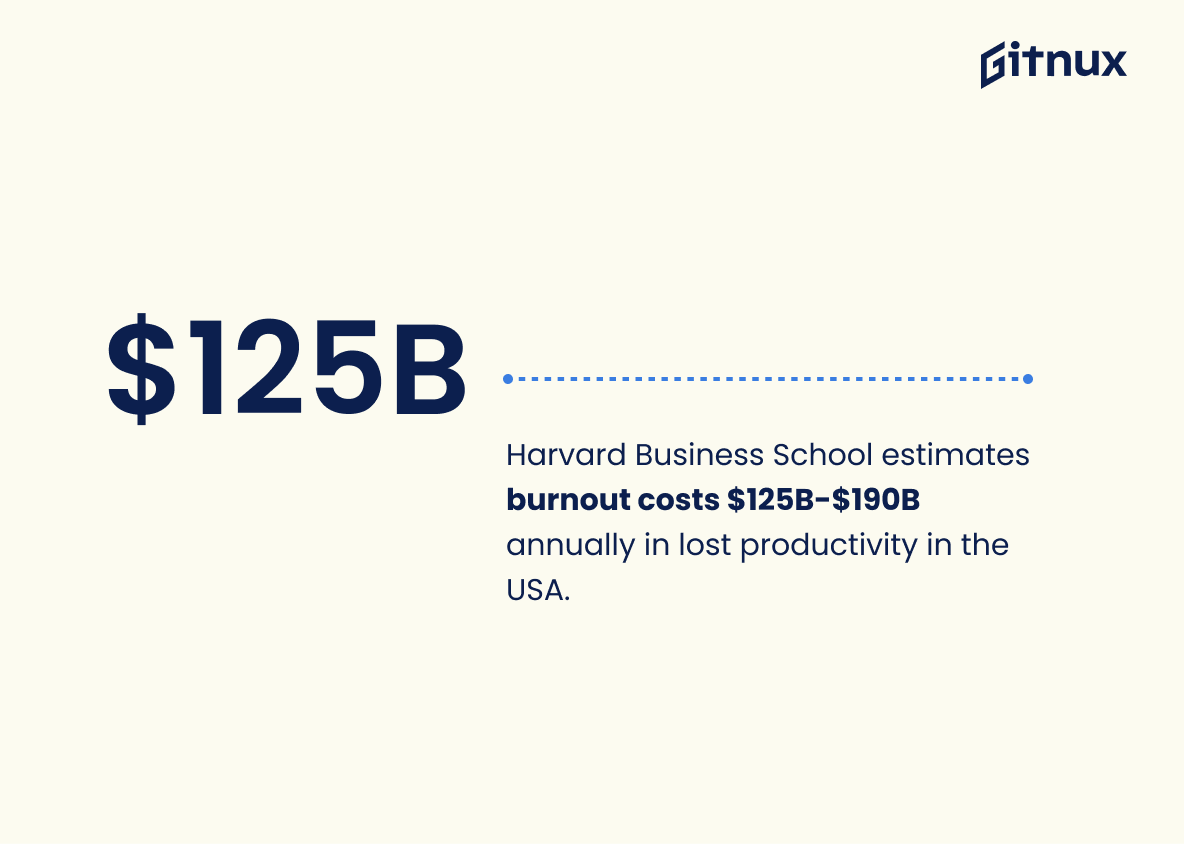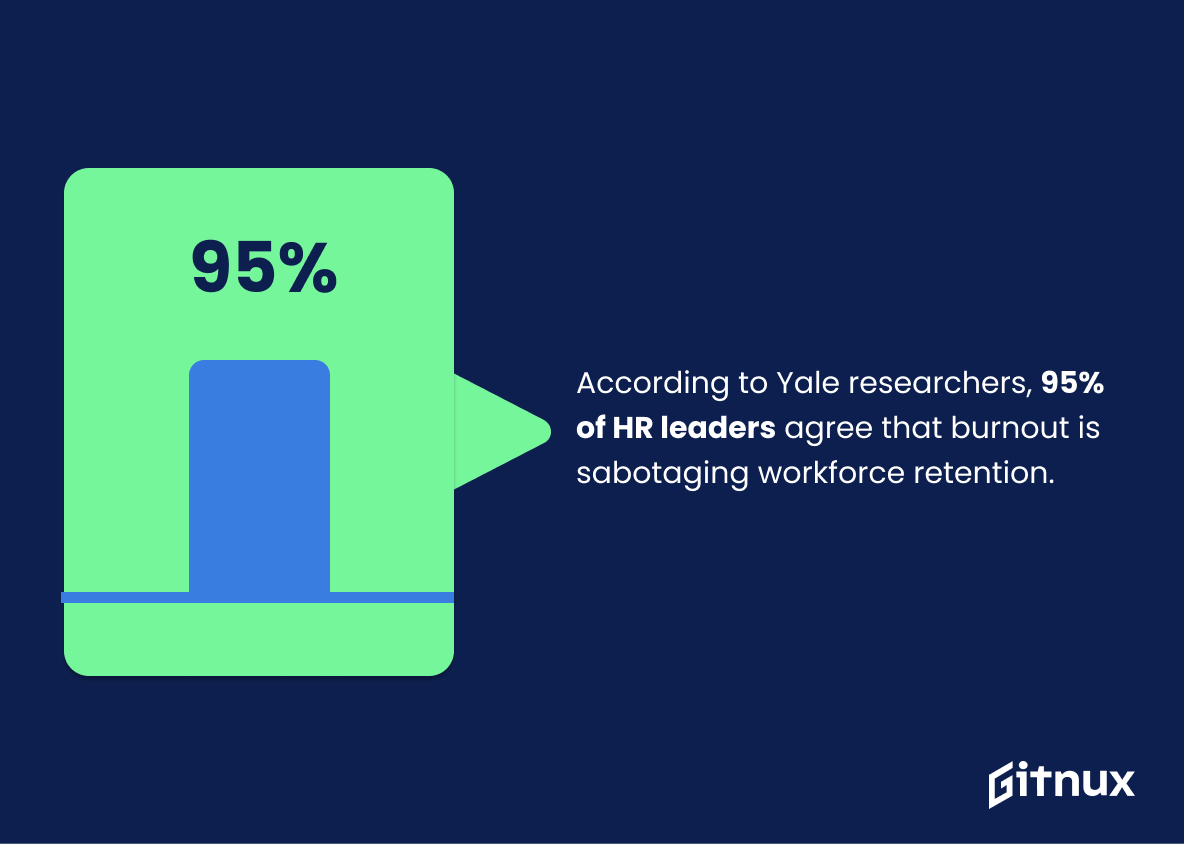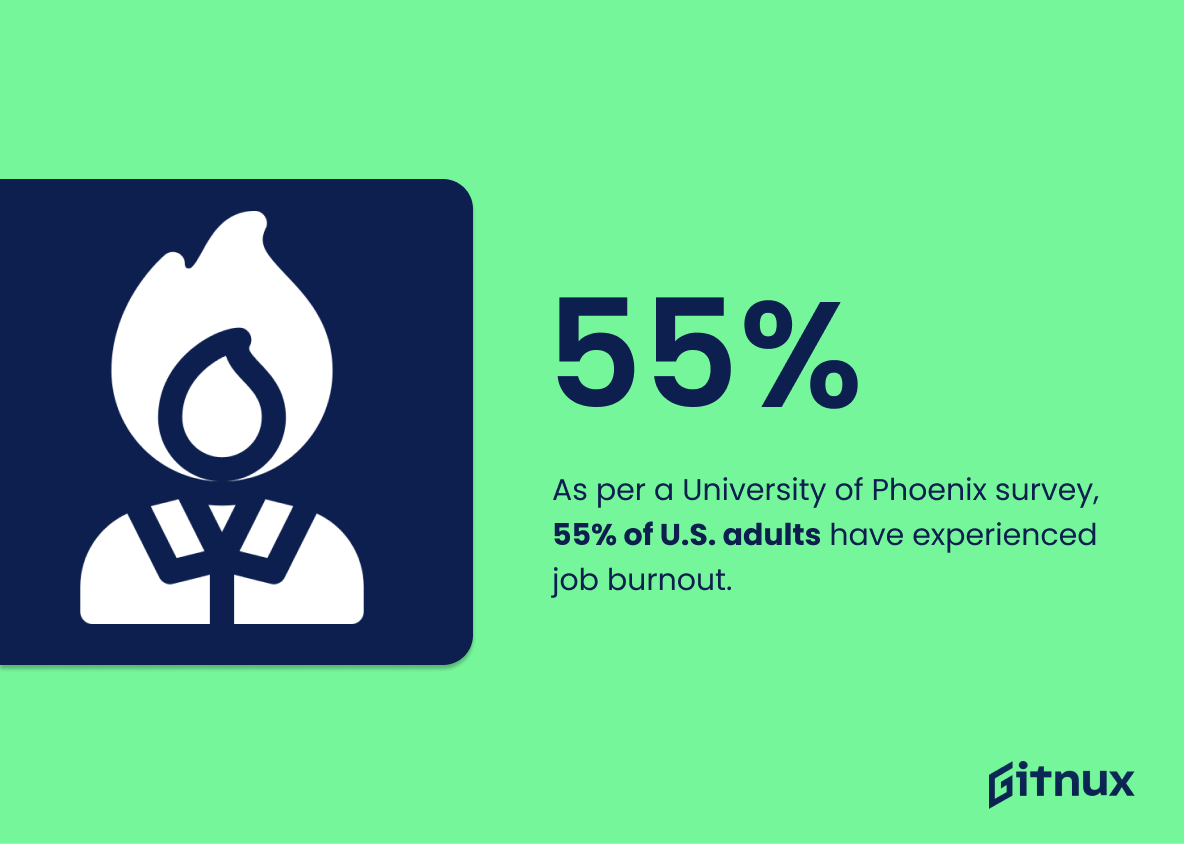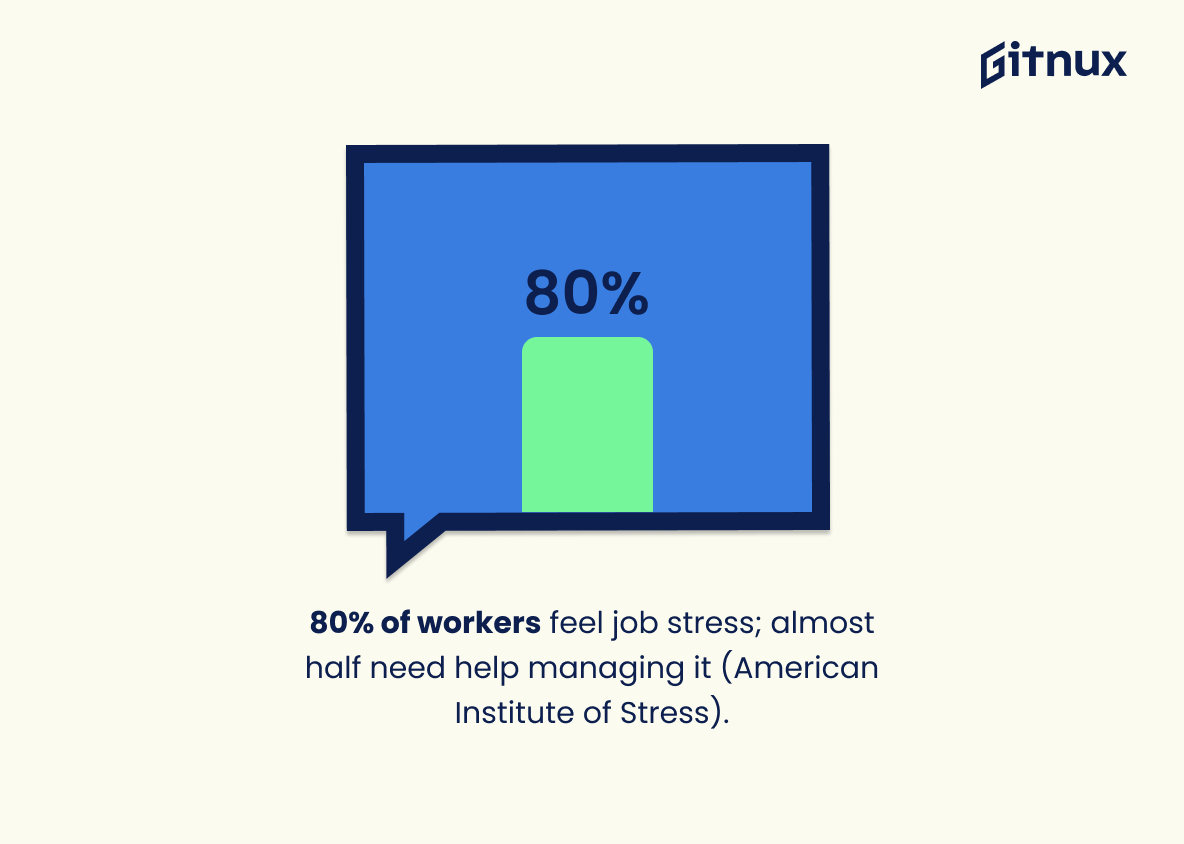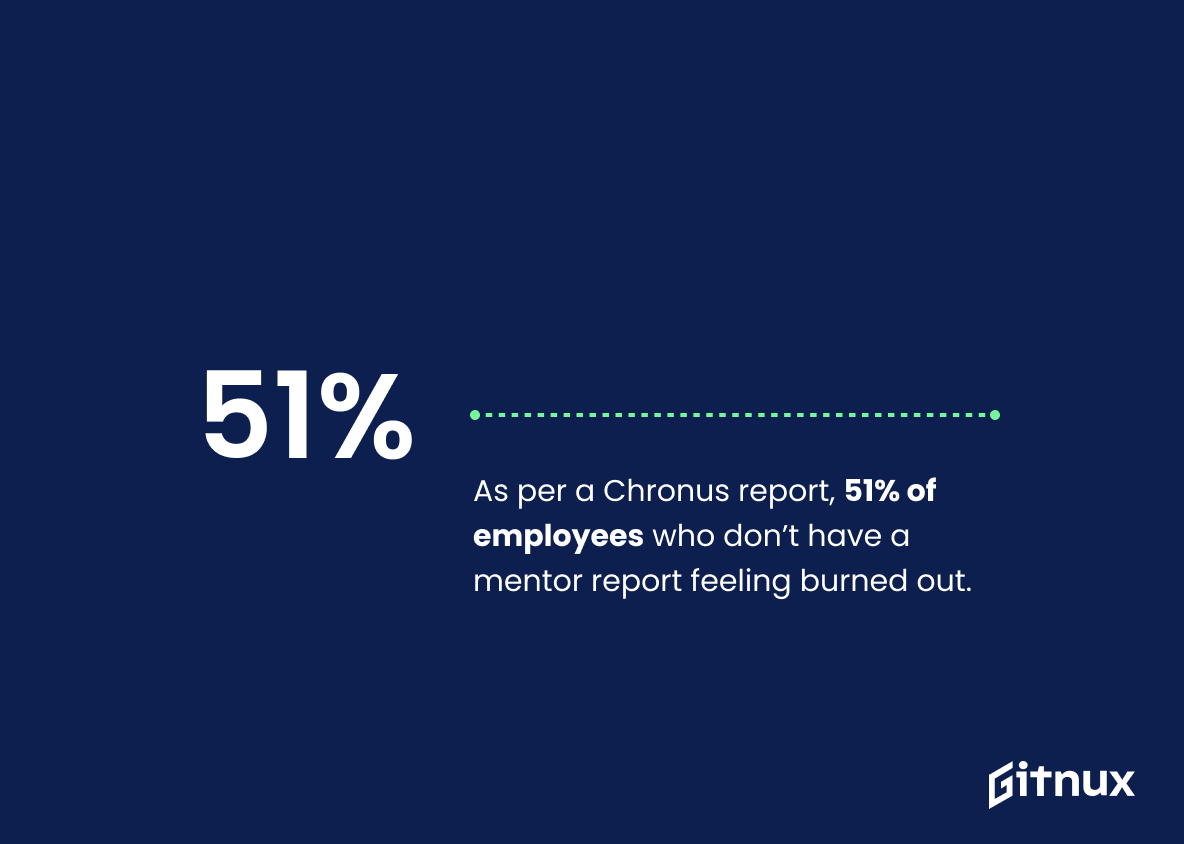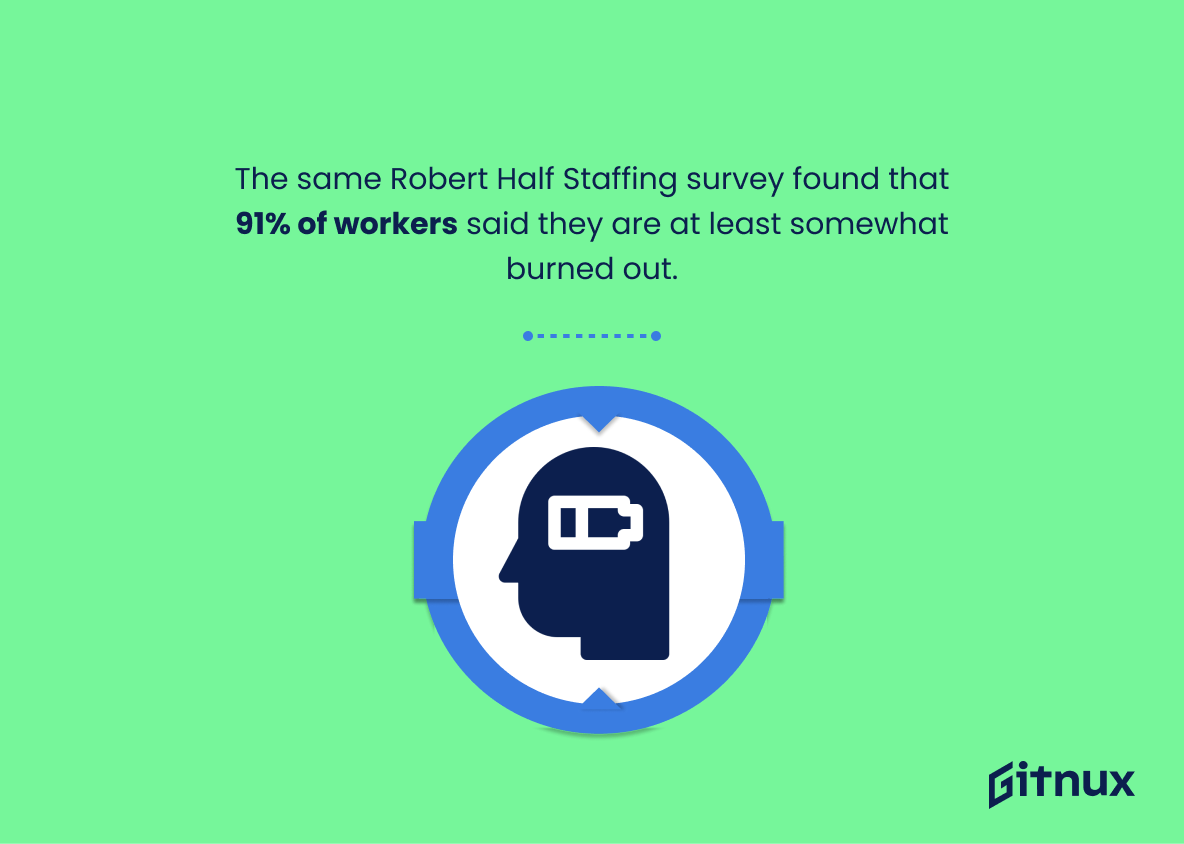In the modern hyper-connected world, workplace burnout has rapidly emerged as a silent epidemic, wreaking havoc on both the mental health of employees and the overall productivity of businesses alike. This blog post delves into the startling statistics around workplace burnout, painting a vivid picture of its pervasiveness across industries and nations. From its root causes to its tangible impact on the workforce and businesses, we journey into the data-driven heart of this pressing issue. Whether you’re an employer, an HR professional, or an employee curious about the facts and figures surrounding workplace burnout, this post offers comprehensive insights that may just be the wake-up call our work culture needs.
The Latest Workplace Burnout Statistics Unveiled
According to the World Health Organization, burnout is now a officially recognized medical diagnosis.
In crafting a narrative centered around Workplace Burnout Statistics, the proclamation by the World Health Organization that burnout is officially a recognized medical condition is the cornerstone. This pivotal declaration underscored the magnitude of the burnout syndrome in contemporary work environments and served as a catalyst to propel the matter into the spotlight of global consciousness. It set the stage for a more comprehensive, empathetic, and scientifically-rooted exploration of the topic, enhancing our understanding of burnout’s effect on individual health, team dynamics, and overall business productivity. To further iterate, it imbues our blog post with a merited gravitas and gives tangible validation to the individual experiences, trends, and preventative strategies we’ll discuss and analyze.
A Gallup study of nearly 7,500 full-time employees found that 23% reported feeling burned out at work very often or always.
This compelling statistic, a revelation from a substantial Gallup study involving nearly 7,500 full-time employees, underscores a pervasive issue in workplaces across the globe: burnout is a reality for nearly a quarter of the workforce, who find themselves perpetually drained and overwhelmed. The brewing ubiquity of this predicament, encapsulated in the figure of 23%, adds a sense of urgency and gravity to a discussion on workplace burnout, revealing it as a very real concern that demands immediate attention and thoughtful dialogue. As such, it greatly enhances the relevancy and authority of a blog post on Workplace Burnout Statistics, making readers acutely aware of the widespread nature of the problem.
The same Gallup study found that an additional 44% reported feeling burned out sometimes.
The striking revelation of an additional 44% of respondents admitting to feelings of burnout on occasion injects a palpable sense of urgency and concern within the discourse of Workplace Burnout Statistics. This figure stands as a clear testament to the widespread pervasiveness of burnout, extending its claws beyond habitual victims to occassionally grip even those otherwise less susceptible. Consequently, this amplifies the call for effective strategies and robust discussions regarding stress management, organizational work culture, and employee wellness programs. It’s an undeniable wakeup call, sounding the alarm on a prevalent issue that needs immediate and proactive addressing.
According to a survey by Deloitte, 77% of respondents said they have experienced employee burnout at their current job.
Highlighting a survey from a reputable source like Deloitte, where 77% of respondents acknowledged experiencing employee burnout at their current job, underscores the extent and prevalence of workplace stress and exhaustion. This figure, quite stark in its reality, compellingly illuminates the conversation on workplace burnout. In the grand scheme of a blog post centered on workplace burnout statistics, this statistic serves as a powerful evidence to drive home the severity and urgency of the issue. It substantially positions the narrative, pivots the discussion towards solutions and prevention measures, and acts as an eye-opener for employers to rethink and re-evaluate their work ethics and policies.
The same Deloitte survey found that 84% of respondents described burnout as a major obstacle to workplace retention.
Unraveling the essence of this statistic offers a dramatic insight into the profound grip of burnout on workplace contentment and longevity. Disclosed by a premium research firm, Deloitte, it starkly illuminates the severity of the issue – 84% of people view burnout as a prominent impediment to keeping people anchored at their jobs. Diving into this deep pool of data, it paints a vivid picture of modern workplaces and can fuel the conversation around reforms necessary to sustain a vibrant, healthy work environment. Moreover, the potency of this statistic in a blog post about Workplace Burnout Statistics would substantially enrich the narrative, driving home the urgency for measures to remedy workplace burnout with a data-backed clarity that can’t be ignored.
According to a study by the University of California, San Francisco, one in five employees reported feeling extremely stressed, largely due to job-related burnout.
The gripping revelation unearthed by the University of California, San Francisco, that a startling one in five employees bear witness to the anguish of extreme stress, predominantly attributed to job-related burnout, holds undeniable pertinence in our discourse about Workplace Burnout Statistics.” This figure, far from mere trivia, is a blaring clarion call drawing attention to a pressing issue of our modern workplaces. It thrusts into the spotlight the harsh reality of spiraling employee stress levels, underscoring the need for comprehensive workplace wellness programs and stress management strategies. Through quantifying such stress experiences, it paves the way for a deeper, more enriched discussion about job burnout, its detrimental impact, and effective countermeasures.
A survey by the American Psychological Association found that 58% of Americans identified work as a significant source of stress.
In the realm of Workplace Burnout Statistics, this fascinating detail from the American Psychological Association’s survey is indeed a glaring beacon. It indicates that more than half of Americans perceive their work as a considerable generator of stress. It is a red flag waving starkly amidst a sea of datapoints, representing the heavy toll that professional pressures can exact on individuals. This percentage represents not just people but stories of emotional fatigue, potentially leading towards the cliff edge of burnout. Such an alarming snapshot illuminates the urgency of proactively addressing employee well-being, opening avenues for businesses to counteract this trend, thereby fostering healthier, more resilient work environments.
The productivity loss from burnout is estimated to be between $125 billion and $190 billion every year in the USA, according to a Harvard Business School report.
Showcasing the gargantuan fiscal impact, the Harvard Business School report illustrates a chilling reality – burnout isn’t just an individual struggle, but a monumental economic issue as well. The reported productivity loss, reaching up to $190 billion annually, does more than just underline the prevalence of workplace burnout in the USA; it underscores the significant financial ramifications of ignoring this escalating problem. In a blog post about Workplace Burnout Statistics, these figures serve as a firm wake-up call for businesses to take proactive measures to address employee burnout, not just for their workforce’s well-being but also for their bottom line.
According to Yale researchers, 95% of HR leaders agree that burnout is sabotaging workforce retention.
Framing this compelling statistic in the context of workplace burnout emphasizes its crucial role in the narrative. Yale researchers reported a staggering consensus of 95% amongst HR leaders, implying that burnout is seen as a major hurdle to keeping talent within the company. In a blog post discussing the repercussions of burnout, this statement would serve as hard-hitting evidence. It underscores the gravity of burnout as a pervasive issue, reverberating through companies and directly impacting their ability to retain staff. Thus, it validates focusing on this topic as imperative rather than optional, for the success and stability of any workplace.
A survey by Mental Health America found that 63% of employees are ready to quit their jobs due to stress and burnout.
The statistic stating that a whopping 63% of employees are primed to leave their jobs due to stress and burnout unveils a critical but often overlooked aspect of today’s workforce environment. In a blog post about Workplace Burnout Statistics, such a figure punctuates the narrative like a flashed warning light. It vividly illuminates the mental stress that employees are experiencing, topping off concerns about productivity drops, decreased employee wellness, and potential staff turnover. This serves as a reminder of the reality of burnout and its significant impacts on both employees and businesses alike. Bringing such an issue to the forefront can help organizations strategize about improvements to workforce well-being. As such, this number is not just a statistic, it’s a wake-up call.
As per a University of Phoenix survey, 55% of U.S. adults have experienced job burnout.
Highlighting the finding from the University of Phoenix survey that states 55% of U.S. adults have experienced job burnout is a potent needle in highlighting the prevalence and far-reaching implications of workplace burnout. In the arena of the corporate world, it serves as a powerful lens to gauge the mounting stress levels, alarming us to the silent epidemic infiltrating our workplaces. When placed in a blog post about workplace burnout statistics, this compelling percentage gives readers a quantifiable sense of the issue under scrutiny— it’s not a minor occurrence or a sporadic issue but potentially a widespread phenomenon. Hence, the gravity of these numbers could inspire urgent conversations on both individual and organizational levels about appropriate countermeasures for maintaining mental health, work-life balance, and overall job satisfaction.
According to the American Institute of Stress, 80% of workers feel stress on the job and nearly half say they need help in learning how to manage stress.
If we gaze into the revealing mirror of the American Institute of Stress, we unearth an unsettling reflection – a staggering 80% of employees endure work-related stress. Teetering on the precipice of an even more disturbing revelation, nearly half plead for assistance in wrangling this rampant stressor. As we navigate through the labyrinth of Workplace Burnout Statistics, this data shines a stark spotlight on the critical need for companies to address workplace stress. Not unlike a silent predator, stress lurks within the heart of businesses, slowly gnashing away at productivity and employee wellness. This considerably high percentage underlines the importance of intervention strategies, providing a compelling call to arms for business leaders and HR professionals alike to fundamentally rethink their approach to employee mental health and workplace culture. This statistic is, indeed, a tangible window into the necessity and urgency of ushering in a revolution for a better, less stressful working environment.
As per a Chronus report, 51% of employees who don’t have a mentor report feeling burned out.
Unraveling the layers of ‘Workplace Burnout’ introduces us to some vital data, illustrated by a Chronus report that unveils a demanding situation – 51% of employees without a mentor report burnout. Vanquishing the mirage of insignificance, this statistic resounds with relevance when discussing workplace burnout. On the chessboard of employment, mentorship often serves as a king, protecting the pieces from the perils of burnout. Without this ally, more than half of the employees find themselves under siege, indicating the crucial role mentorship plays in preserving the vitality of the workforce. Therefore, the statistic is not only an illuminating beacon but a profound commentator on the essence of mentorship in warding off burnout, solidifying its place in a discourse about workplace burnout statistics.
According to a Robert Half Staffing survey, 96% of senior managers believe their team members are experiencing some degree of burnout.
Illuminating the pressing concern of burnout, the Robert Half Staffing survey conveys a stark reality — a staggering 96% of senior managers perceive their team members to be grappling with varied levels of exhaustion. This statistic is pivotal for a blog post on Workplace Burnout Statistics. It unmasks the pervasiveness of burnout, verifying it’s not a solitary problem but rather an epidemic affecting the majority within the corporate world. Managers’ acknowledgment of this issue is critical; it indicates a recognition that workplace expectations may need reevaluation. Thus, this statistic serves as both a wake-up call and a compass, guiding readers towards understanding the colossal scale of burnout and igniting discussions about preventative strategies.
The same Robert Half Staffing survey found that 91% of workers said they are at least somewhat burned out.
Shining a spotlight on the Robert Half Staffing survey’s eye-opening revelation, we discover that a whopping 91% of workers report feelings of burnout. This crucial piece of information threads a compelling narrative into our discussion on Workplace Burnout Statistics. It’s not just that it paints a vivid picture of the staggering levels of emotional and physical exhaustion experienced by professionals; it also underscores the urgency to address the prevailing burnout culture that seems to have woven itself into the very fabric of our workplaces. This statistic, in essence, amplifies the voices of workers and demands that we pay heed to their cries for a healthier work-life balance, less stress, and improved workplace conditions.
According to research by the Society for Human Resource Management, almost 50% of HR professionals noted an increase in workplace burnout since the COVID-19 pandemic.
Undeniably, the research by the Society for Human Resource Management serves as a linchpin to our diving discourse on Workplace Burnout Statistics. Reflecting the visceral reality of the working landscape during the pandemic, it reveals a stark 50% spike in stress-induced burnout among HR professionals. This resonates deeply as a testament to the escalating hurdles faced by employees in maintaining a harmonious balance between work demands and personal resilience during the crisis. Furthermore, it injects raw perspective to our understanding of the profound impacts COVID-19 has had not only on the physical health of mankind but also its mental and emotional wellbeing. Above all, it amplifies the urgency for organizations and institutions alike to revisit employee welfare policies, exhorting the pressing need for fostering a healthier and more sustainable work environment even amid global upheaval.
On a global scale, a survey by Korn Ferry found that nearly 75% of professionals say stress at work has had a negative impact on their personal relationships.
This compelling statistic paints a vivid picture of the profound repercussions of workplace stress, spilling over from the office into the sanctuary of personal relationships. Not only does it underline the gravity of burnout in professional settings, but it also emphasizes the crucial need for preventative measures, improved work-life balance, and comprehensive employee wellness programs. For a blog post centering around workplace burnout, this statistic serves as a stark reality check, demonstrating that the ripples of work-related stress reach far beyond the cubicles and conference rooms. It appeals to the human side of corporate bodies, inspiring them to address burnout head-on, as its implications are far-reaching, both for employee productivity and personal relational harmony.
According to a workplace mental health report by Mind Share Partners, 60% of respondents had left a job or would consider leaving one due to mental health, including burnout.
Highlighting such a significant statistic in a blog post about Workplace Burnout Statistics paints a vivid picture of the true magnitude of the issue at hand. Not only does it reveal the profound impact of mental health and burnout on job attrition, but it also underscores the importance of prioritizing wellness in the workplace. Alarmingly, over half of the respondents have already opted to change their job circumstances due to these concerns or are seriously contemplating it. This fact acts like a wake-up call, urging readers to acknowledge the reality and prevalence of burnout. It serves as a compelling argument for the urgent need of better mental health support and effective interventions within the professional environments.
According to a study by Kronos Incorporated, employee burnout is the biggest threat to building an engaged workforce.
Highlighting the study by Kronos Incorporated offers an authoritative anchor to the narrative around workplace burnout. By identifying employee burnout as the most formidable obstacle to an engaged workforce, it delivers an undeniable evidence of the significance and severity of workplace burnout. This assertion underscores the potency of burnout, not just as an individual issue, but a systemic one with wide-reaching implications on workforce mobilization and productivity.
Such data, therefore, amplifies the urgency and need for both spotting burnout early and implementing effective interventions. It drives the point home that a discussion on workplace burnout is not a mere side-conversation, but a dire necessity in today’s high-pressure working environment. Introducing this statistic can provide a compelling foundation for the blog post, prompting readers to realize the gravity of the situation and the importance of finding solutions.
The same study showed that nearly half (46%) of HR leaders blame employee burnout for up to half of their annual workforce turnover.
Shining a light on this startling number—46% of HR leaders attributing up to half of annual workforce turnover to employee burnout—we begin to see the harrowing silhouette of workplace stress that is often concealed in the shadows of productivity and quotas. Woven into the intricate fabric of this statistic is a narrative of exhausted employees unable to keep pace with the relentless demands of their job, leading to a cascading effect of regular workforce turnover.
Our digital epoch pronounces this issue, making it a luminary in the discussion of workplace wellbeing, its pulsating relevance echoing the urgent need for more humane working conditions. In this blog post about workplace burnout statistics, this figure serves as a loudest whistle, heralding the necessity for systemic change to ensure talent retention, employee happiness, and ultimately, organizational success.
Conclusion
The growing statistics on workplace burnout underline a major challenge for modern businesses. With its significant implications on both individual health and organizational productivity, tackling this issue has become paramount. Despite the concerning numbers, the light at the end of the tunnel is the heightened awareness and proactive strategies being implemented by organizations globally. Preventative actions promoting healthy work-life balance are not just an option, but a necessity in today’s fast-paced world. An investment in mental health and wellness is, fundamentally, an investment in a company’s overall success. The key takeaway – actively mitigating workplace burnout can result in healthier employees, a more positive work environment, and ultimately sustained business growth.
References
0. – https://www.www.apa.org
1. – https://www.www.kronos.com
2. – https://www.chronus.com
3. – https://www.www2.deloitte.com
4. – https://www.www.mentalhealthamerica.net
5. – https://www.www.roberthalf.com
6. – https://www.hbr.org
7. – https://www.www.phoenix.edu
8. – https://www.www.mindsharepartners.org
9. – https://www.www.who.int
10. – https://www.www.ucsf.edu
11. – https://www.www.stress.org
12. – https://www.www.gallup.com
13. – https://www.www.shrm.org
14. – https://www.www.kornferry.com
15. – https://www.www.forbes.com
